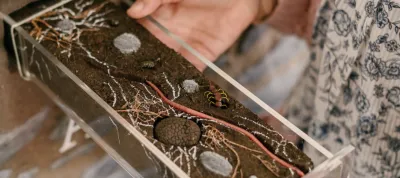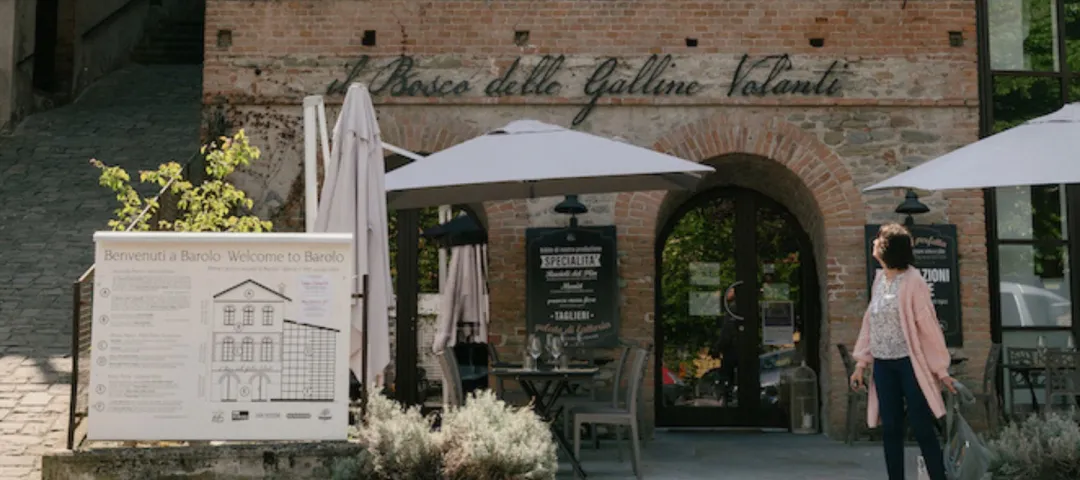General information
RDP Priority
- P2. Competitiveness
RDP Focus Area
- 2A: Farm’s performance, restructuring & modernisation
RDP Measure
- M04: Investments in physical assets
- M06: Farm & business development
Beneficiary type
- Farmer / land manager
Summary
Europe’s multifunctional farms enhance the socio-economic and environmental viability of rural areas. They combine traditional agricultural practices with a diversity of functions such as hospitality and catering, education and community development, and landscape and biodiversity conservation.
Viviana Germano is a graphic designer who changed careers and used CAP funds to help her create a multi-functional farm near her family vineyards in northern Italy. She grows vegetables and rears chickens, supplying her restaurant as well as sharing in a cooperation project with neighbouring farmers to offer local food boxes.
Her ‘soil fertility’ museum forms part of a programme of education and tour services at the farm for schools and tourists. Viviana received CAP funding available for young farmers, and has qualified in sustainable agriculture. She markets her farm enterprises under the name of Forest of Flying Chickens.
Results
- 10 new jobs created in the farm, restaurant, museum and shop.
- 1 training course completed in integrated agriculture.
- 20 people visiting the farm every day.
- 10 farms coordinate to create unique boxes full of local vegetable specialties.
- 30-50 types of vegetables and herbs produced every season.
- Gender equality empowered by providing a successful businesswoman role model in food systems.

Promoter
il Bosco delle Galline Volanti
Funding
Total budget 42 000 (EUR)
RDP support: 35 000 (EUR)
Private/own: 7 000 (EUR)
Keywords
Ressourcen
Documents
Good Practice Report - CAP funds help a young female farmer’s ‘Forest of Flying Chickens’ agrifood business ideas to take off.
(PDF – 3.67 MB)
Context
Multifunctional farms in Europe represent a promising model for integrating local food production with environmental educational and tourism services. These farms can enhance their role in the community by providing fresh, locally sourced, healthy produce, and simultaneously serve as distinctive learning venues and unique visitor attractions.
Farms can offer workshops and tours that emphasise sustainable agricultural practices to increase awareness about the importance of local food systems and environmental stewardship. Multifunctional farms can also cater to lucrative tourist markets by offering culinary experiences that highlight traditional healthy foods.
This can be achieved through farm-to-table dining opportunities, cooking classes, and tastings that showcase seasonal ingredients. Engaging tourists in regional culinary traditions on farms promotes cultural cuisine while encouraging sustainable consumption habits, community health and economic development.
Viviana Germano, from northern Italy, was a graphic designer who became interested in professional cooking and established a multifunctional farm business to grow, cook, and sell fresh, natural and ‘zero-kilometre’ products. Her rural entrepreneurship was supported by different types of CAP funding, including young farmer start-up aid.
She located her start-up close to her family vineyards, where she could convert an under-used building into a restaurant, as well as use fields nearby for her catering service’s vegetable garden and hen housing. Viviana has also developed a specalised museum on soil fertility and successfully coordinated local farms to supply a food box scheme. Her multifunctional farm operates under the name ‘Il Bosco delle Galline Volanti’ (Forest of Flying Chickens).
Objectives
Creating a multifunctional farm under the brand name Forest of Flying Chickens to:
- grow fresh, natural and zero-kilometre products (fruit, vegetable, edible flowers and free-range eggs).
- teach the importance of biodiversity in agriculture for citizens, particularly young people and tourists.
Activities
Actions involved in creating the multifunctional farm included:
- launching the restaurant.
- producing vegetables and rearing poultry.
- promoting the farm products and services.
- developing the museum with an educational programme of visits for schools, tourists and other farmers.
Main results
- job creation through activities in the farm, restaurant, museum and shop (circa 10 new jobs).
- 1 integrated agriculture certification (SQNPI Sustainable quality - Bios).
- 20 people visiting the farm every day.
- 10 farms coordinate to create unique boxes full of local vegetable specialties.
- 30-50 types of vegetables and herbs produced every season.
- gender equality and providing a successful model of women’s business empowerment in food systems.
Key lessons
- Traditional cooking interests can be used commercially to explore various business ideas that not only celebrate culinary heritage but also contribute to the sustainability of rural communities.
- This project shows that synergic agriculture allows for good quantities of high-quality vegetables that can respond to the needs of a restaurant’s kitchen.
- By cultivating diverse crops and livestock, multifunctional farms can provide fresh produce, ensuring local consumers receive seasonal and nutritious options. This not only supports local economies but also reduces the carbon footprint associated with food transportation.
- Farm restaurants allow farmers to showcase their products in a culinary context, creating a direct connection between farming practices and consumer appreciation of food.
- Educational services for school students and tourists are useful for fostering awareness of sustainable agriculture practices. Offering workshops, guided tours, and hands-on activities enables participants to directly engage with practical farming processes.
"The project ‘il Bosco delle Galline Volanti’ brought me lots of amazing adventures: come and discover this world with me! We produce in a sustainable and natural way, without using fertilisers, herbicides and pesticides. We offer a complete gastronomic experience through field visits and food tastings. We are in a network of 11 producers offering complete food box baskets of our products."
